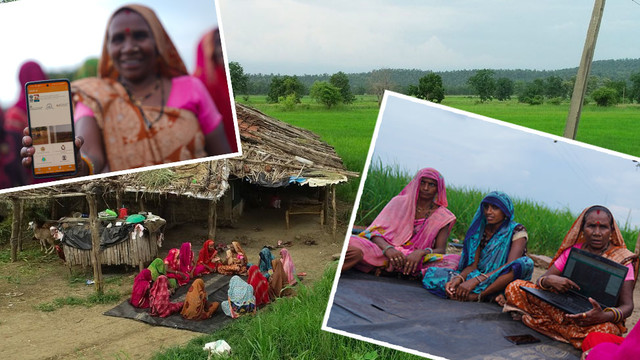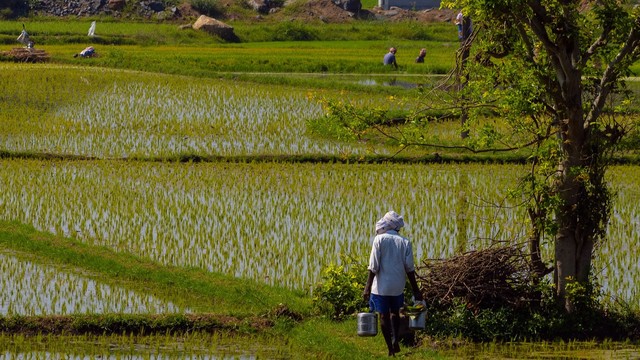The IPCC and an urbanising planet
The IPCC's Fifth Assessment gets the importance of understanding and acting on urbanisation.


The capital of Bangladesh, Dhaka, is one of the world's largest cities. It is surrounded by rivers and lies only a few metres above sea level. The urban poor living in flood-prone areas are most threatened by climate change (Photo: David Dodman/IIED)
In a marked change from previous IPCC Assessment reports, the Panel's Fifth Assessment (AR5) gets the importance of understanding and acting on urbanisation, making it unusual as many international agencies do not.
It also understands the potential for cities – and the importance of city governments – in adaptation and the transformative changes needed to avoid dangerous climate change, as evidenced by the IPCC's Synthesis Report, Climate Change 2014 (PDF), released on 2 November 2014.
The three IPCC Reports in AR5 run to more than 5,000 pages. The issues that receive attention in the synthesis matter because it is more widely read and it encourages the reader to go to the long reports for more detailed coverage. Important issues highlighted in particular chapters in the three reports can be otherwise overlooked.
Here is a user's guide to the key urbanisation issues highlighted in the synthesis report.
Adapting to climate change impacts in urban areas
How urban areas concentrate a large proportion of the world's population most at risk is recognised: "In urban areas, climate change is projected to increase risks for people, assets, economies and ecosystems, including risks from heat stress, storms and extreme precipitation, inland and coastal flooding, landslides, air pollution, drought, water scarcity, sea-level rise and storm surges."
The synthesis outlines the need for far more attention to adapting urban areas and the critical importance of local (metropolitan, city and municipal) governments in this.
Local government and the private sector are "recognised as critical to progress in adaptation, given their roles in scaling up adaptation of communities, households, and civil society and in managing risk information and financing."
But a city cannot adapt to climate change if a large proportion of its population lives in poor quality housing in informal settlements lacking piped water, storm and surface drains, all-weather roads and emergency response services.
There are huge development deficits in urban areas in low and middle-income countries. Around a billion urban dwellers live in poor quality housing in informal settlements lacking the infrastructure and services that can reduce climate change risks (see Chapter 8 of the full report on Impacts, Adaptation and Vulnerability (PDF)).
Also recognised is the importance of "enhancing the capacity of low-income groups and vulnerable communities and their partnerships with local governments" as part of an effective adaptation strategy.
It is when adaptation strategies combine household, community and local government resources and capacities that they become more effective, especially if these involve those most at risk.
The synthesis makes it clear how higher levels of government need to support this: "Urban adaptation benefits from effective multi-level governance, alignment of policies and incentives, strengthened local government and community adaptation capacity, synergies with the private sector, and appropriate financing and institutional development."
Urbanisation and mitigation
The form urbanisation takes in rapidly urbanising nations, with China and India as the most spectacular examples, and has vast implications not only for climate adaptation but also for mitigation.
Dangerous climate change will not be avoided without acting on urban areas' potential to combine high living standards with energy-efficient, resource-efficient production and consumption.
As the synthesis states: "the next two decades present a window of opportunity for mitigation in urban areas, as a large portion of the world's urban areas will be developed during this period."
Without the much needed global agreement on mitigation (PDF), even cities that have taken adaptation seriously will be unable to protect their populations and economies.
Recognising the importance of urban areas
Many international agencies have no policy on urban areas. This also means they lack the expertise to know how to support appropriate policies and practises.
They do not see the importance of supporting locally-driven development, adaptation and mitigation. Or if they do, they lack the means or the channels to support this.
Within the Sustainable Development Goals (SDGs) discussions, there is little recognition of how much the implementation of all the proposed goals and targets depend on local governments and local civil society.
There is a draft SDG to "make cities and human settlements inclusive, safe, resilient and sustainable" but it is unclear whether it will survive the next round of redrafting.
As we move towards Paris 2015, international agencies and global discourses dealing with the issues of adapting to climate change impacts and mitigation should develop their policies to reflect the vital role urbanisation and urban governments will play in the future.
A new way forward: integrating development, adaptation and mitigation
The increasing attention to mitigate and adapt to climate change imply an increasing complexity of interactions at the intersections among water, energy, land use and biodiversity.
In the IPCC's Third and Fourth Assessments, the coverage of urban issues was mostly in a sub-section of one chapter. Unusually, preparations for AR5 also recognised the importance of local government as the head of the Environmental Planning and Climate Protection Department of eThekwini Municipality (Durban), Debra Roberts, was invited to be a lead author in the chapter on adaptation in urban areas.
In the main reports too, urban issues get far more attention in the Fifth Assessment compared to previous assessments. This can be seen in the long and detailed chapters that focus on urban areas in Climate Change 2014: Impacts, Adaptation, and Vulnerability and in Climate Change 2014, Mitigation of Climate Change.
What makes the AR5 synthesis so unusual is that the importance of urban practices, policies and governments for adaption and mitigation is recognised not only in the chapters on urban areas but throughout the report as a whole, for example: "An integrated response to urbanisation provides substantial opportunities for enhanced resilience, reduced emissions, and more sustainable development.
"Building resilient infrastructure systems can reduce vulnerability of urban settlements and cities to coastal flooding, sea-level rise and other climate-induced stresses.
"In rapidly growing and urbanising regions, mitigation strategies based on spatial planning and efficient infrastructure supply can avoid the lock-in of high emission patterns. Mixed-use zoning, transport-oriented development, increased density, and co-located jobs and homes can reduce direct and indirect energy use across sectors. Compact development of urban spaces and intelligent densification can preserve land carbon stocks and land for agriculture and bioenergy."
The above quotes all come from the Climate Change 2014 Synthesis Report. Crucially, it means the scientific community is seeing these issues as interlinked when it comes to combating climate change.
Now that the IPCC has taken urban issues and urban governments seriously, now it is time for urban governments, residents and enterprises to respond appropriately.
David Satterthwaite (david.satterthwaite@iied.org) is a senior fellow in IIED's Human Settlements Group, and was a coordinating lead author (with Aromar Revi) on the Chapter on Urban Areas in IPCC, 2014: Climate Change 2014: Impacts, Adaptation, and Vulnerability, [Field, C.B., V.R. Barros, D.J. Dokken, K.J. Mach, M.D. Mastrandrea, T.E. Bilir, M. Chatterjee, K.L. Ebi, Y.O. Estrada, R.C. Genova, B. Girma, E.S. Kissel, A.N. Levy, S. MacCracken, P.R. Mastrandrea, and L.L. White (eds.)]. Cambridge University Press, Cambridge, United Kingdom and New York, NY, USA, 1132 pp. He was also a lead author in the Third Assessment and a review editor in the Fourth Assessment.



